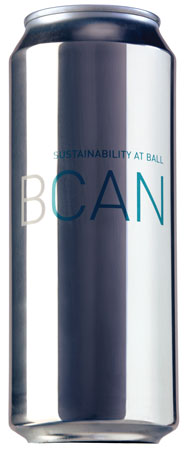Reducing the Cost of Food Packaging
PACKAGING
Packaging can represent a substantial portion of final costs. Packaging costs encompass packaging material, packing operations, distribution, and the expense of inappropriate packaging. Cost-cutting often proceeds on a product-by-product basis due to the integration of primary, secondary, and tertiary packaging components. When one package component is altered, other components may need to be altered; otherwise, damage or reduced shelf life can ensue. Innovative design, material science, agility, and purchasing savvy are needed to optimize savings.
Design Innovation
Ways to reduce costs via design innovation can involve primary, secondary, or tertiary packaging. The low-hanging fruit is often tertiary packaging because its cost can be decreased with primary and secondary packaging already in place. Tertiary packaging costs can be dramatically reduced by exploring the actual function of tertiary packaging related to the primary package and product. A product that supports itself—such as soda in rigid bottles or cans—needs minimal support from tertiary packaging during distribution from manufacturing facility to retailer. As a consequence, tertiary packaging is needed for containment as opposed to support. In this case, low-cost containment can be in the form of corrugated trays with shrink film overwraps, rings and tapes, thin paperboard cartons, or shrink-wrapped pallets to contain bottles and cans. However, for products such as fresh fruits and vegetables and beverages in pouches, tertiary packaging needs to be designed to support product and inner packaging (primary and secondary). Recent research by professor Jay Singh at California Polytechnic State University demonstrates that Bliss style boxes for fresh fruits and vegetables allow for 60% less corrugated fiberboard than standard corrugated boxes. Corrugated costs can be lessened by decreasing the flutes/linerboard basis weight, optimizing the size of the flutes and vents, increasing open flap areas, and combining secondary and tertiary packaging.
The same concepts of reducing materials and optimizing their use have been applied to primary packaging. Reducing the weight of packaging components has been more avidly pursued since implementation of the Rigid Plastic Packaging Container Act in California and other sustainability programs such as Green Dot. Even though such regulations focused on improving environmental sustainability, economic sustainability was one of the results. Initially, material was removed within an entire package with the desire to make packages lighter. But further developments in glass, plastic, and metal manufacturing allow for optimally reducing the weight of a package by defining material density variations within a package. For example, if production systems require high speed closure application torques, the most material is needed in the thread and shoulder area of a bottle. And if distribution systems require exceptional barriers due to prolonged exposure to high temperatures and humidity, materials need to be optimized for environmental resistance. The use of finite element modeling and analysis (FEM/FEA) for package design is increasingly in the packaging professional’s toolkit to reduce costs by optimizing mechanical and barrier properties of packages. Diminishing costs using FEM/FEA has evolved from the esoteric use of computer-aided design for stress analysis into a refined tool for package development. The ability to predict the mechanical strength of polymers with nanocomposites as well as the ability to pinpoint package structural weaknesses in factories and distribution have moved the use of FEM/FEA from a research concept to an essential design tool to optimize materials, and it is linked to manufacturing as well. Thermoform operations—considered to be trial and error with different package configurations and polymers—are now enhanced with FEM.
 Material Innovation That Reduces Cost
Material Innovation That Reduces Cost
As packaging materials that are compatible with food continue to evolve, new materials combined with new processes are revolutionizing the packaging industry. Often adapted from the construction industry, composites with added strength allow for the use of less material with equal or improved barrier and mechanical properties. Specifically, the alignment of nano- and micro-components within a material matrix has a major impact on mechanical and barrier properties. Predictive models to assess the use of nano- and micro-composites within packaging are prevalent and can result in reduced R&D costs and a more optimal package. The ultra-light, 11-ounce capacity can by Ball Corp., Broomfield, Colo. (ball.com), is an example of advanced material science combined with FEM for design and manufacturing. Ball’s aluminum can has a thickness of only 0.09 mm (less than a human hair) while withstanding internal pressure of 6.2 atmosphere.
As the use of predictive modeling advances beyond FEM, expectations of the packaging function within food companies is high. Universities and other research entities and easy-to-use software platforms play critical roles. For example, a recent partnership between Crown Holdings, Philadelphia, Pa. (crowncork.com), and Swansea University focuses on new opportunities for advancements in the packaging capacity of thin metal sheets and reductions in the amount of material that lower package costs.
Sometimes a material change is prompted by cost savings. Various predictive tools can be used by suppliers to optimize tertiary packaging based on the inner product and package. When conversions from glass to rigid plastic occur, the weight of the packaging declines since plastics are lighter than glass, but plastic has less capacity to support weight. This conversion often requires alternate racking storage systems or additional support via tertiary packaging—both unexpected costs in the supply chain. Because food companies use packaging from a range of companies, understanding the interface between disparate roles of packaging components is critical.
 Teresa Krug, director of paperboard materials R&D at WestRock, Richmond, Va. (westrock.com), provides insight: “WestRock’s breadth of paperboard substrate offerings in primary, secondary, and tertiary packaging, and our deep industry knowledge, allow us to ask the right questions to provide the right solutions for our customers at the right time and cost. We focus our research and development on the performance needed to meet the demands of our customers through the complete supply chain process. This results in innovations that protect the brand while meeting consumer and post-consumer needs.” One example Krug highlighted is WestRock’s EnShield, a lightweight paperboard for food packaging that requires resistance to oil and grease at a higher level than traditional solid bleached sulfate paperboard can provide. EnShield meets end consumer needs by preventing the mess of oil and grease from soaking through paperboard. It is also repulpable, improving packaging end-of-life options versus traditional poly-coated boards.
Teresa Krug, director of paperboard materials R&D at WestRock, Richmond, Va. (westrock.com), provides insight: “WestRock’s breadth of paperboard substrate offerings in primary, secondary, and tertiary packaging, and our deep industry knowledge, allow us to ask the right questions to provide the right solutions for our customers at the right time and cost. We focus our research and development on the performance needed to meet the demands of our customers through the complete supply chain process. This results in innovations that protect the brand while meeting consumer and post-consumer needs.” One example Krug highlighted is WestRock’s EnShield, a lightweight paperboard for food packaging that requires resistance to oil and grease at a higher level than traditional solid bleached sulfate paperboard can provide. EnShield meets end consumer needs by preventing the mess of oil and grease from soaking through paperboard. It is also repulpable, improving packaging end-of-life options versus traditional poly-coated boards.
The Benefits of Design Agility
The advantages of incorporating agility into packaging design and materials is similar to the agility used by food companies that make slight formulation changes based on ingredient pricing. For example, the difference in cost between high fructose corn syrup and sugar can drive intermittent formulation changes. Changes in the price of packaging materials or distribution systems can prompt material and design switches as well. For example, when the dollar amount of unsaleable food rises with food prices, this prompts more protective packaging to reduce overall business costs. More protective packaging can mean the use of nanocomposites within a polymer structure, more material to increase the barrier properties, or more corrugation to reduce distribution damage, or it can mean the need for a costly package redesign. Building agile options into package design is critical to being able to achieve package savings without redesigning an entire package.
Since new product introductions have high failure rates and finite lifespans, package designs that readily flex with new product introduction mean that expensive package changes can be minimized while the impact on consumers is maximized. For example, altering the label of a soup can to reflect a new soup flavor results in minimal increase to the package price and minimal disruption to production operations. However, a new platform often warrants a new package for brand differentiation. For example, Campbell’s Go Soup (in a multilayer pouch) and Slow Kettle Soups (in polyethylene and polypropylene barrier cups) are distinct from the canned soup image of Campbell’s. And they also offer agility in design of the layers within the pouch and cup. For example, barrier within the pouch and cup can be altered based on the desired shelf life, product, and platform changes. Arcelor Mittal, Luxembourg City, Luxembourg (arcelormittal.com), focuses on shape innovation, and its Creasteel packaging is designed for agility since it is compatible with including heat-seal foils, easy-to-open ends, and seamed rings.
Agile package specifications also result in cost savings. Specifications that are flexible allow the capture of fluctuations in the market. This requires defining essential characteristics within a specification and omitting nonessential parameters. For example, for packaging films, tensile strength that is parallel to a production line (machine direction) is relevant to manufacturing speeds, but the tensile strength during cross-direction is not as relevant. Allowing cross-direction to have a wide range of value allows for flexibility in how blown film is produced, which can result in lower material costs. Switching from different values of post-consumer or post-industrial recycled content is another example of how cost savings can occur by isolating critical and non-critical parameters and working with packaging suppliers to define these within specifications. Stock containers offer another opportunity to flex. Altering product weight or volume to align with stock container offerings often saves on package design and production tooling.
 Claire Koelsch Sand, PhD, Contributing Editor
Claire Koelsch Sand, PhD, Contributing Editor
President, Packaging Technology & Research
Adjunct Professor, Michigan State Univ.
[email protected]
